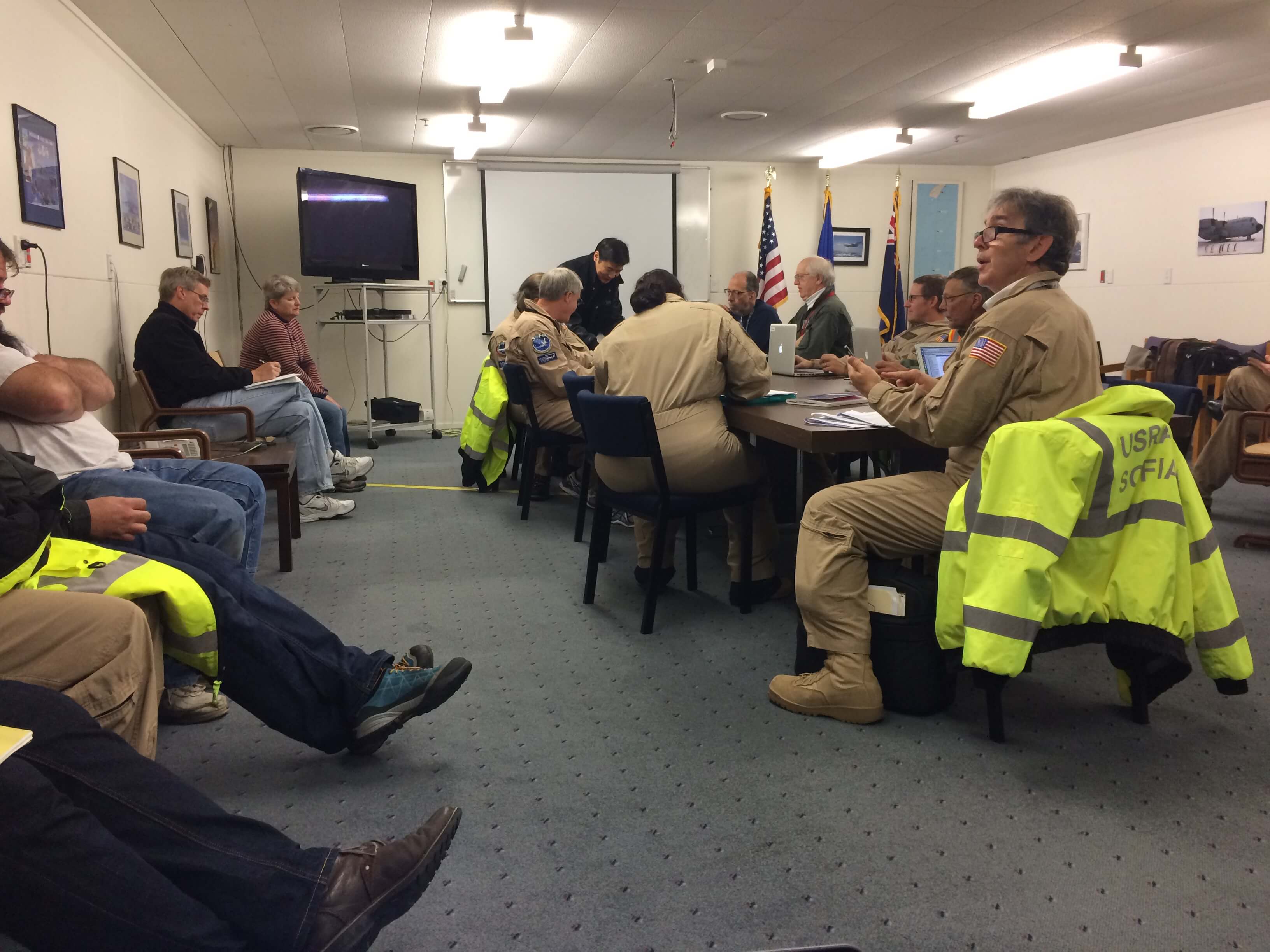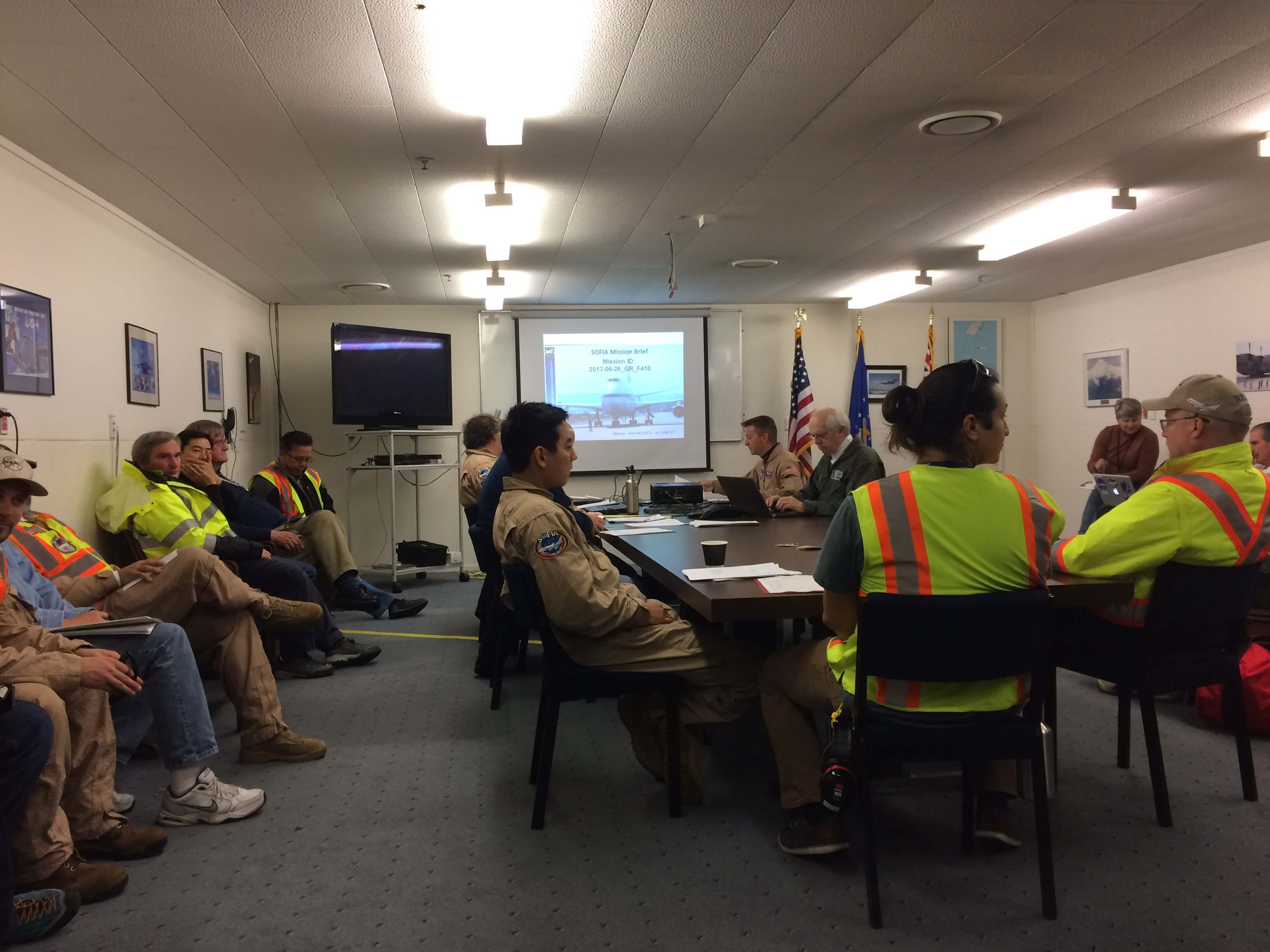July 4, 2017
Last night we had two Guest Observers aboard the flying observatory, Dr. Monica Rubio from the University of Santiago Chile, and Dr. James Jackson, from the University of New Castle, north of Sydney, Australia, both first time fliers. It was fascinating sitting down with both of them during the course of the flight to learn more about them and also what they think of SOFIA. Guest Observers Monica Rubio, James Jackson and Stefanie Milam all excited about doing their science with SOFIA and first time flyers. Stefanie would fly the next day.

James was a veteran Kuiper Airborne Observatory (KAO), the precursor airborne observatory to SOFIA, observer and his first remarks to SOFIA is – “It’s big. The instruments are 10x larger. And more people. Plus there is room to walk about.” And when he witnessed the “mapping” feature of the GREAT instrument on the SOFIA telescope, he remarked “phenomenal.” It took a bit over a year to design (and equally important, fully debug), but this piece of software aptly called “The Translator” really enables efficient hand-shaking between the science instrument and the telescope, so much so that you can truly embrace this airborne observatory does use every precious minute in the sky to its fullest potential.
Now his object of interest was the ‘Nessie Nebula.’ It is a large filamentary gas cloud in the spiral arm of our Milky Way. It’s a fascinating place as it is home to some wacky star forming regions. It got it’s name from the fact that is looks quite serpentine across the sky. He’s looking for gas infalling on the cores, which supposedly are forming massive stars. With this information he hopes to be put together a clearer picture how stars form from collapsing clouds.
 James Jackson (standing) talking strategy with Ed Chambers (seated), instrument scientist.
James Jackson (standing) talking strategy with Ed Chambers (seated), instrument scientist.
Monica’s favourite place in the sky is the Small Magellanic Cloud, or SMC, a neighbouring galaxy to ours, a meer 200,000 light years away. The SMC is very different from our own galaxy, in terms of its chemical makeup, with a makeup more similar to high-redshift galaxies at the edge of the known universe. SOFIA is in a prime location from the southern hemisphere latitudes to see this object high in the sky. Over the course of a few nights, she was targeting seven different star formation regions in the SMC. She’s studying a transition of ionized carbon with the hopes to measure the reservoir of star forming gas in the SMC and investigate how we can use local knowledge about the SMC to better explain the chemistry of the high-redshift universe. Monica uses a lot of ground-base sub-millimeter telescopes for her research, and SOFIA gives her the ‘infrared’ chemistry she needs.

Monica Rubio discussing her science with GREAT instrument team members Anna Parikka and Denise Riquelme Vasquez.
Our route this flight took us down to 64 deg 55 min 39 sec South latitude which provided a nice glimpse of the aurora Australis, a chemistry of a different kind, that of our planet’s atmosphere interacting with the solar wind.
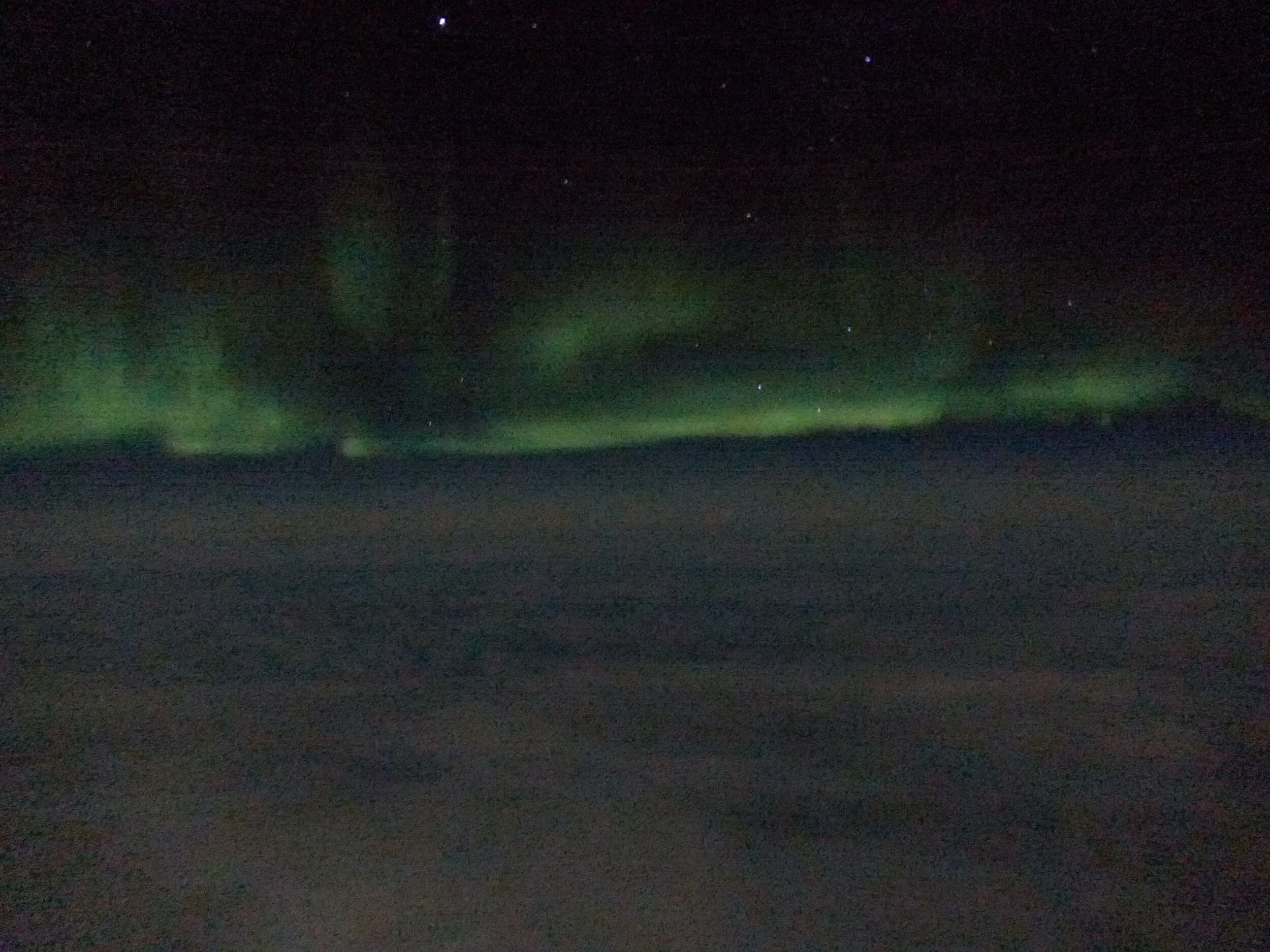
Southern Lights or Tagu-Nui-A-Rangi, the great burning in the sky.

Panaroma of July 3rd flight.



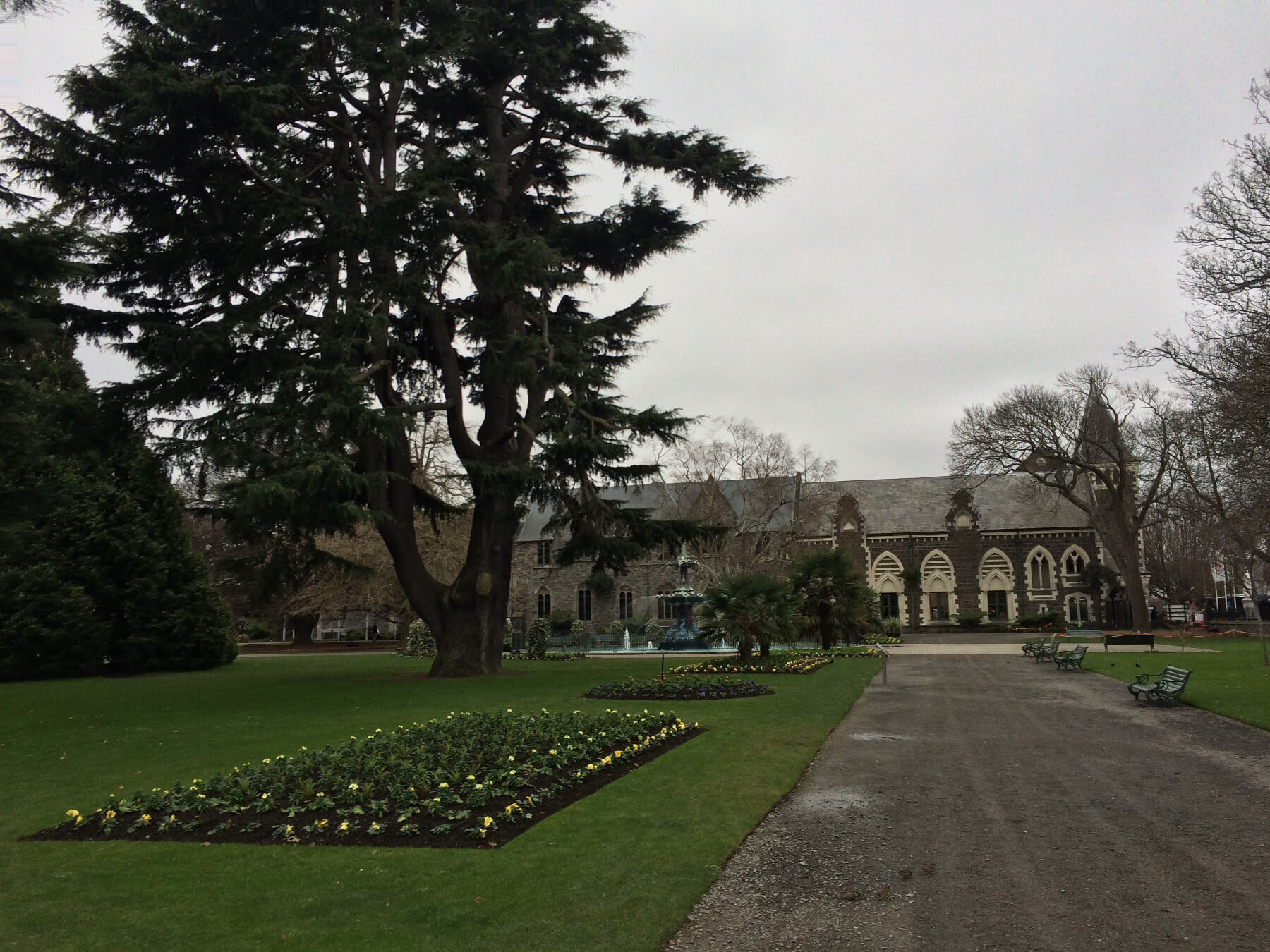
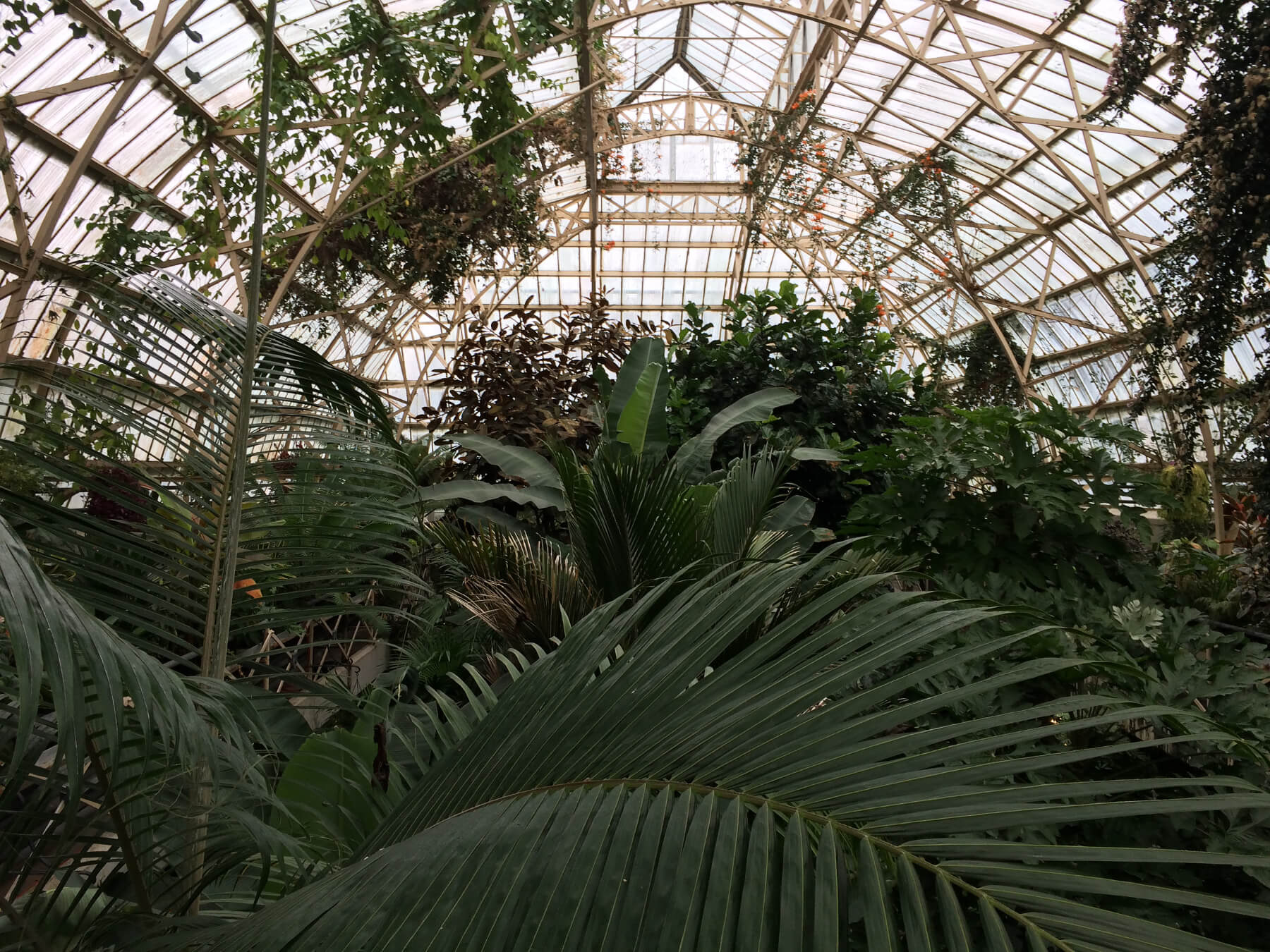



 Flight Plan for the June28th SOFIA flight.
Flight Plan for the June28th SOFIA flight.


